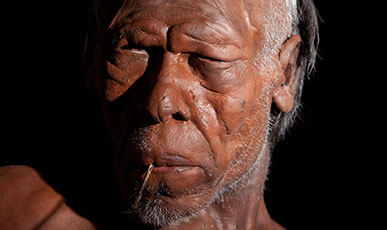Research on a fossil that we care for at the Natural History Museum helps explain why Neanderthal faces look different to our own.
Human origins expert Professor Chris Stringer introduces the work in this short clip.
Research on a fossil that we care for at the Natural History Museum helps explain why Neanderthal faces look different to our own.
Human origins expert Professor Chris Stringer introduces the work in this short clip.
Neanderthals are one of our closest ancient human relatives, but their faces differed from our own in a few characteristic ways.
As well as a heavy brow ridge and large front teeth, the middle of their face protruded and they had a large, broad nose. In comparison, our own faces are much flatter.
The research used fossil remains of a young Neanderthal child, which were found in 1926 at a place in Gibraltar called Devil’s Tower, to study how Neanderthal faces grow.
Read the news for more details about the study and what it revealed.
The Devil’s Tower Neanderthal fossil is on display alongside other key specimens in our Human Evolution Gallery.

Our scientists and the collections we care for are helping to answer where, when and how humans evolved.
Don't miss a thing
Receive email updates about our news, science, exhibitions, events, products, services and fundraising activities. We may occasionally include third-party content from our corporate partners and other museums. We will not share your personal details with these third parties. You must be over the age of 13. Privacy notice.
Follow us on social media